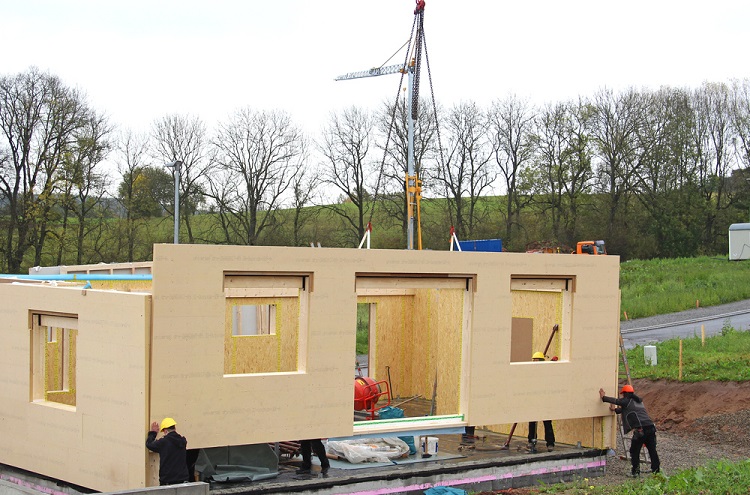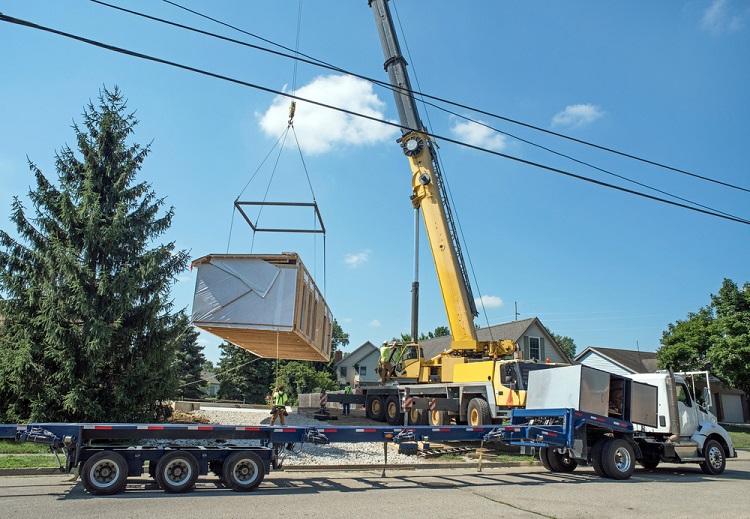
Since today’s customers are more interested in making environmentally responsible choices, it makes sense for the corporate sector to increase its involvement in green practices. In the construction industry, stakeholders are also going green. Prefabricated constructions are becoming increasingly popular as a manifestation of this rising environmental consciousness among consumers.
Modular or prefabricated construction is a viable option for public and private structures due to its superior affordability and environmental friendliness. This type of building is constructed by first making its parts in a factory and then putting them together in the actual location. Construction is also highly effective, taking only a few days to a few weeks to complete.
Furthermore, prefab is also very adaptable to individual needs. They’re easily adaptable to new configurations, making them suitable for a wide variety of settings.
And the most essential aspect of prefab construction is that it’s environmentally friendly, especially compared to conventional building methods. The following are the reasons why:

- Use Less Energy
In contrast to traditional building methods, the time required to create a portable structure, like a shipping container home, is drastically reduced. Time spent on prefabrication is often less than half that spent on conventional building methods. Because of this, less energy is needed in constructing the building.
Additionally, energy-saving features are standard in modular construction. Solar panels, energy-saving glass, and other such features are installed in addition to the prefabricated structure.
Improved wall insulation and energy efficiency result from the factory’s regulated environment, which permits more precise construction, tighter joints, and better air filtering. That means the prefab building’s owner will save money on utilities over time.
- Produce Less Waste
Fabricated building components are produced in a controlled factory setting, allowing for the simple separation of recyclable materials from those not needed. This is an improvement compared to the standard practice of hauling building site garbage to a landfill.
Additionally, all the parts of prefab building materials are cut accurately as they’re created using a software program. This is good news since it means fewer resources will go to waste. Wastes like broken materials, unusable materials, rubble, and other debris can be reduced or eliminated during prefab construction compared to conventional building methods.
- Durable
Besides energy efficiency, another aspect to think about when evaluating a building’s effect on the environment is its durability. When a house or other structure is well-constructed, it can withstand the elements for decades. Generally speaking, the longer a structure lasts, the less environmental impact it has because you don’t have to do as many upgrades and repairs over time. This, in turn, lowers your need for more resources and energy.
Most prefab housings and structures stand the test of time because their components are constructed from materials that can withstand shipping. These are also tailored to withstand the natural conditions at the location where they are to be built.
Furthermore, a skilled workforce crafts each component of the prefabricated structure within a climate-controlled factory. Precision machine equipment is also used to meet safety standards, and the entire process is subjected to stringent quality control measures.
- Recyclable
One advantage of prefabrication is that many of the building components can be recycled or produced from previously-used materials. Prefabricated structures often use substantial amounts of recycled materials, including steel, wood, and glass. However, it’s important to note that the components aren’t 100% recycled, but they’re so sturdy that they may be used repeatedly with little to no detriment. Thus, there’ll be lesser need to use new resources.
- Cause Lesser Environmental Disturbance
Since prefab construction entails putting together pieces, the finished structures can be moved around easily, avoiding the need for demolition and saving a lot of time and money. They may be moved from one location to another with little to no impact on the natural environment.
Additionally, prefabricated buildings have a far more conducive environment for work because of their simplified design. Fewer delivery trucks, material suppliers, and more are needed to hang about the building site for final assembly. And because there would be fewer trucks on the road, air pollution is reduced. Environmental disturbances, such as noise pollution, are also greatly reduced.
Conclusion
If you’re looking to lessen your impact on the environment during your construction, prefab construction is the way to go. Pre-fabricated structures help you limit environmental damage compared to traditional modes of construction. In addition to helping prevent harm to the environment, this strategy might end up saving you both time and money in the long term. Use this information to your advantage.



